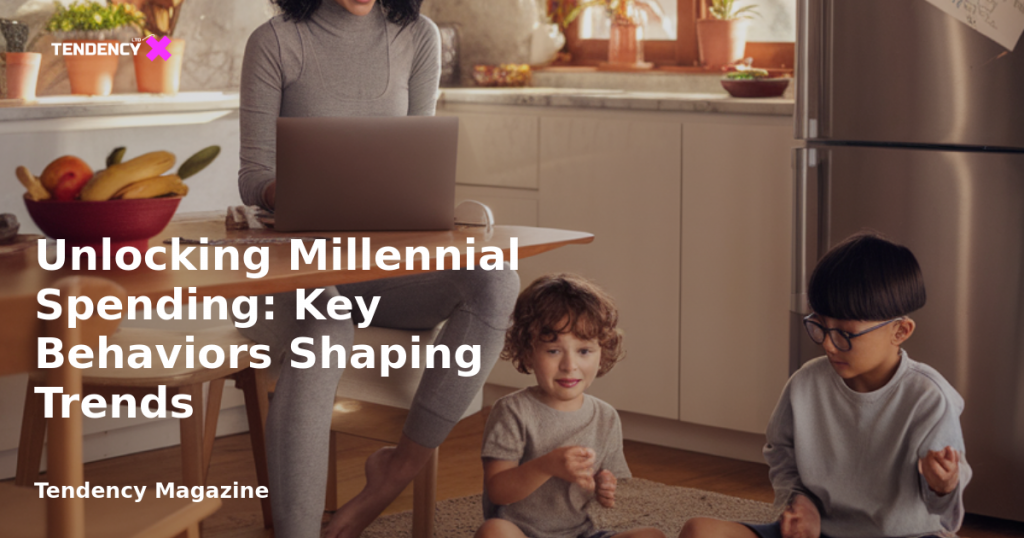Unlocking Millennial Spending: Key Behaviors Shaping Trends

Understanding Millennial Buying Behaviors
Millennials, those born between 1981 and 1996, make up a significant portion of the global population, accounting for 29%. In the United States alone, they form the largest adult demographic, with over 74 million individuals. This substantial presence translates into considerable purchasing power. Despite the economic challenges they faced during the 2008 Great Recession, millennials are now in their prime spending years. A notable 16% of U.S. millennials earn $100,000 or more annually. Understanding the shopping habits of this influential generation can be pivotal for businesses aiming to foster brand loyalty and drive sales. This article explores key millennial purchasing behaviors and their potential impact on business strategies.
Table of Contents:
- Understanding Millennial Buying Behaviors
- Nostalgia with a Healthier Twist
- The Reign of Convenience
- Prioritizing Wellness and Longevity
- Breaking Taboos
- The Subscription Economy
- Conclusion
Nostalgia with a Healthier Twist
Millennials, many of whom are now parents, often feel nostalgic for their childhoods. This nostalgia is reflected in their purchasing decisions, especially for their children. However, they prioritize safer and healthier options. For instance, food brands like Chomps offer millennials a taste of childhood nostalgia with healthier alternatives. Similarly, Belgian Boys caters to millennial parents by offering products inspired by European childhood staples, free from artificial ingredients and GMOs. These brands not only provide healthier options but also engage millennial parents with creative ideas for bonding activities with their children.
The Reign of Convenience
Unlike Gen Z, who often seek in-store experiences, millennials prefer the convenience of online shopping. Reports indicate that millennials are more inclined to shop online compared to other generations. The ease of online shopping, combined with options for customizable bundles and discount codes, makes it an attractive choice. Despite concerns about sustainability, the convenience of online shopping, including hassle-free returns, remains a significant factor for millennials.
Prioritizing Wellness and Longevity
As millennials age, their focus on wellness and longevity becomes more pronounced. Reports suggest that a significant portion of millennials would accept a pay cut for a lifestyle that prioritizes well-being. They spend considerably on beauty, fitness, and mental health resources, driving the growth of the global wellness market. Millennials are open to experimenting with health-tracking devices, beauty and mindfulness apps, and other wellness products. Brands like Bala and AG1 cater to this demographic by offering products that align with their wellness goals and aesthetic preferences.
Breaking Taboos
Millennials are known for their openness, which has led to the challenging of stigmas from previous generations. Topics like menopause, once considered taboo, are now openly discussed. The market for menopause-related products is growing, with millennials playing a significant role in its expansion. Brands like Perelel Health and Stripes are successfully tapping into this market by offering products designed for menopause and perimenopause. The willingness of millennials to discuss these topics on social media further drives demand and innovation in this space.
The Subscription Economy
Millennials have a strong affinity for subscription services, both digital and physical. They are the generation most likely to have multiple subscriptions, spending over $100 per month on average. Subscriptions offer convenience and cater to millennials’ desire for curated experiences. From beauty products to meal kits, the subscription model allows millennials to explore and experiment with new products while avoiding decision fatigue. This trend presents opportunities for businesses to engage millennials with personalized and convenient offerings.
Conclusion
Millennials, with their significant purchasing power and unique preferences, are a crucial demographic for businesses to understand. Their inclination towards nostalgia, convenience, wellness, openness, and subscriptions shapes their buying behaviors. By aligning business strategies with these preferences, companies can effectively engage millennials, fostering brand loyalty and driving sales. As millennials continue to influence market trends, businesses that adapt to their needs and values will likely thrive in this dynamic landscape.
2025 Tendency LTD. All rights reserved.

